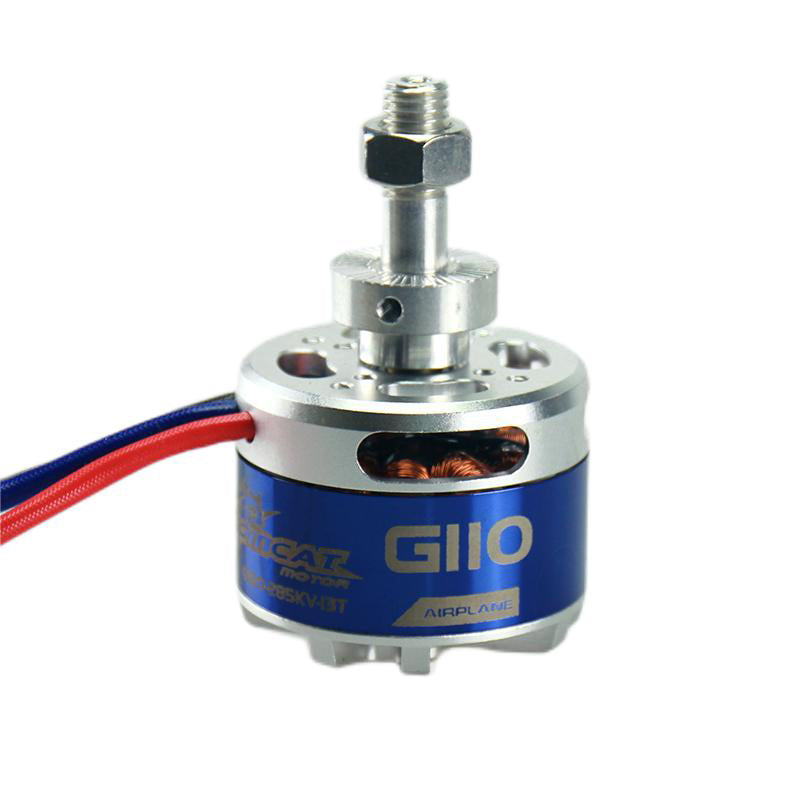How to Measure the Power Output of an RC Airplane Motor

Ensuring your RC airplane motor operates at optimal power is essential for performance and longevity. Measuring the power output of your motor not only helps maintain your aircraft but also allows you to fine-tune its performance for specific flight conditions. In this guide, I’ll walk you through the process of measuring the power output of an RC airplane motor, with a focus on Dynam aircraft and motors. I’ll also share my personal experience with the TomCat G110 6320-285KV Outrunner Motor to illustrate the importance of this practice.
Why Measure Power Output?
RC airplane motors, particularly those like Dynam’s high-performance models, are engineered to deliver precise power for various aircraft sizes and types. Measuring the power output helps you:
- Ensure Motor Efficiency: Verify if your motor is running at peak performance or wasting energy.
- Prevent Damage: Avoid overheating or overloading the motor and electronic speed controller (ESC).
- Enhance Flight Performance: Adjust the power system for specific flight styles like aerobatics or long cruising flights.
Tools You’ll Need
Before you start, gather the following tools:
- Wattmeter: To measure power in watts.
- Multimeter: For precise voltage and current readings.
- Battery: Preferably the one you’ll use in your aircraft.
- ESC (Electronic Speed Controller): Compatible with your motor.
- Propeller: Matching your motor’s specifications.
Step-by-Step Guide to Measure Power Output
1. Set Up Your Equipment
- Connect the motor to the ESC.
- Attach the propeller to the motor shaft.
- Wire the wattmeter between the battery and ESC.
Pro Tip: Always use a propeller that matches your motor’s specifications to avoid overloading the system. For example, when testing Dynam motors, refer to their user manual for recommended propeller sizes.
2. Power Up Safely
- Turn on your transmitter and throttle to zero.
- Connect the battery and ensure all connections are secure.
3. Measure Voltage and Current
Slowly increase the throttle and observe the wattmeter’s readings:
- Voltage (V): Indicates the power supply’s health.
- Current (A): Determines how much power is drawn from the battery.
4. Calculate Power Output
The wattmeter will display the power in watts:
Power (W) = Voltage (V) × Current (A)
Example: If the wattmeter shows 14.8V and 30A, the power output is 444W.
Optimizing Power for Dynam RC Airplanes
Dynam offers a range of motors tailored for various aircraft, from trainers to warbirds. Measuring power output ensures their high-performance model aircraft motors, like those in the Dynam Spitfire or Dynam T-28 Trojan, deliver the intended thrust and efficiency.
Common Power Output Targets
| Aircraft Type | Motor Power (Watts) | Propeller Size |
|---|---|---|
| Trainer (e.g., Dynam Cessna 310) | 150-250 W | 9x6 or similar |
| Warbird (e.g., Dynam FW-190) | 350-500 W | 11x7 or larger |
| Aerobatic (e.g., Dynam SU-26M) | 500+ W | Varies |
Note: These values depend on the motor and battery specifications. Always test within recommended limits.
My Experience with the TomCat G110 Motor
One of my favorite motors to test was the TomCat G110 6320-285KV Outrunner, which I installed on a 110 Glow Balsa EP Airplane. This motor delivers exceptional torque, making it perfect for large balsa planes.
Test Results
Using a 6S LiPo battery and a 16x8 propeller, I recorded:
- Voltage: 22.2V
- Current: 50A
- Power Output: 1,110W
The sheer power allowed my plane to perform smooth aerobatics while maintaining energy efficiency during long flights. Regular testing helped me identify the optimal throttle range, reducing wear on the motor and extending flight times.
FAQs on Measuring RC Motor Power
Q1: How often should I measure motor power?
It’s good practice to measure power output:
- After installing a new motor or propeller.
- Whenever performance seems inconsistent.
- Periodically for maintenance.
Q2: Can I measure power output without a wattmeter?
Yes, you can use a multimeter to measure voltage and current, but a wattmeter simplifies the process by calculating power directly.
Q3: What should I do if the power output is too high?
- Switch to a smaller propeller.
- Use a lower voltage battery.
- Check the motor for any mechanical issues.
Tips for Dynam RC Motor Testing
- Start Small: Begin with lower throttle settings to avoid sudden surges.
- Monitor Temperatures: Overheating can damage the motor or ESC.
- Record Data: Keep logs of power output for future reference.
Conclusion
Measuring the power output of your RC airplane motor is a vital step in ensuring optimal performance and extending the life of your equipment. For Dynam RC enthusiasts, regular testing can unlock the full potential of these high-quality aircraft and motors.
Whether you’re flying a Dynam PT-17 Stearman or experimenting with a powerhouse like the TomCat G110, knowing your motor’s capabilities will take your RC experience to new heights.



